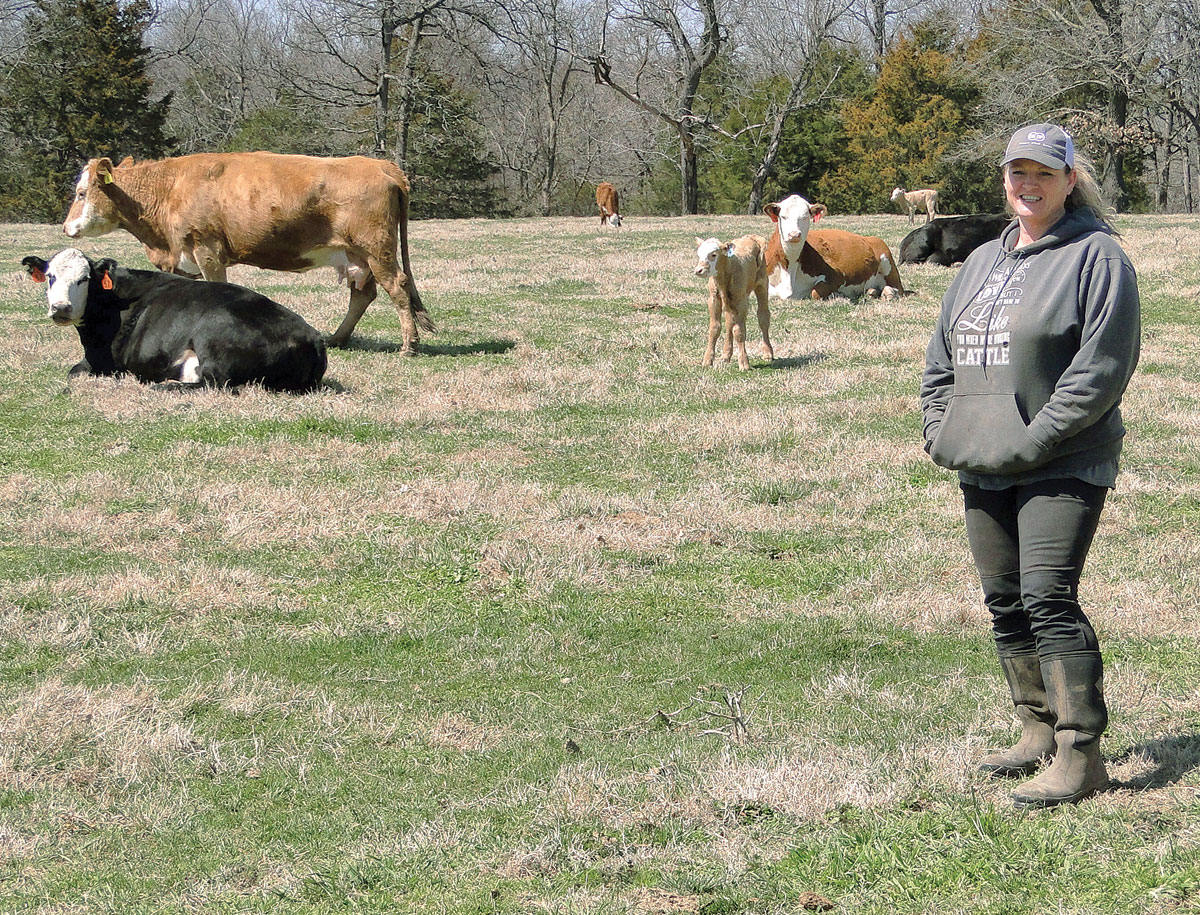
Stacey Gragg is the primary operator of the farm she shares with her husband John
Years ago, most men ran the farms and most wives stayed home or had an off-the-farm job that added insurance as well as income to family welfare. Today, many more women run the farms with the husbands having the off-the-farm jobs.
Stacey Gragg of Lincoln, Ark., is one such woman. Stacey can be found feeding and tending to livestock, or clearing stumps on leased land while her husband John is at work for Ozark Electric. He was scheduled to retire in March 2019, but the company offered John a good two-year position that was less physically demanding.
Stacey has always worked in farming and met John while working as a farmhand for two local cattlemen. One volunteered Stacey to help John by mowing and baling John’s hay, thus bringing the future couple face-to-face.
“The match seemed perfect because we made each other laugh and love the farming lifestyle,” Stacey said with a laugh.
The couple married in 2018. Stacey quit her jobs and took over the cattle operation at John’s place, bringing her cattle and horses.
“Working for someone else was fine but as an employee you are expected to follow their directions on what to do and how to do it. Working on our place allows me to do what we think is best and how we believe it should be done. Working without external restrictions is simpler and easier,” Stacey explained.
While Stacey and John make operation decisions together, Stacey is able to supply the labor and organization John simply doesn’t have time for. Stacey not only does most of the daily work, but she also keeps the books and is now keeping breeding records since retaining heifers is feasible. Previously, John bought replacement heifers in Joplin so he didn’t need breeding records. Stacey does the doctoring and has a dart gun if needed. Another of her contributions is using horse treats instead of range cubes to maintain the herds’ docility.
The Gragg farm has 330 acres, some owned and some leased. Grandpa Shelby and Grandma Jewell Austin purchased 400 acres near Kinion Lake in 1952. Since then the land has been divided, with John’s cousin Brian owning the home place.
Stacey and John currently have 96 mixed commercial cows.
“I’d love to have cows of every kind but John’s not so hot on the idea,” she said.
Nonetheless, multiple breeds are represented in their herd. In terms of bulls, they currently have four Herefords, two LimFlex, one Gelbevieh and one Angus. Before they married, Stacey ran a Charolais and a Hereford bull so she could tell which bull bred which cow, an easy way to keep breeding lines straight with a small herd. Her Charolais bull has been sold and one Hereford bull is in the process of being sold. Stacey and John went to a special Gelbvieh sale where she saw a bull she loved, mostly because of his thick hind end. As women have done since time immemorial, she batted her eyes at John and he allowed that old trick to work, at least partially, because he liked the bull’s composition.
John and Stacey work their cattle twice a year; at the end of March and November. That routine includes vaccinating for pinkeye and worming. They use Stanguard pour on for flies. They usually sell the spring calves at weaning because they’re short of pasture, though they keep fall calves longer because they have hay. Since they have a commercial herd, they typically sell at the Benton County Sale Barn or in Siloam Springs rather than through private treaty.
In order to keep winter grazing as long and nutritious as possible, they reseed with wheat, ryegrass and lespedezza. and broadcast spray for weeds when the pigweed starts coming up. Thereafter they spot spray for thistles and Hemlock, which causes birth defects. Fields are fertilized with chicken litter, if available, or with a commercial brand from the co-op. Stacey explained they prefer chicken litter because it is cheaper, the land seems to tolerate it better and helps build up the soil.
The Gragg feeding protocol includes a 14 percent protein ration custom mixed at Cattlemen’s Feed in Concorde, Okla. Heifers and weaned calves are grained, as are bulls when not in service. Heifers and weaned calves receive 5 pounds a day while the bulls receive 6. They also offer magnesium in spring when the grass comes on and a different mineral mix in the fall.
In terms of the future, they are hoping to increase both acreage and herd size. Further, they are planning on taking classes on palpation, AI and ET. Perhaps most importantly, they are looking forward to having grandchildren on the place with Stacey already having purchased a pony for their two very young grandsons.
If Stacey was missing as a youngster, her mother always knew she could be found: with the cattle. One time a temperamental cow named Ready had a calf that Stacey desperately wanted to befriend. She packed a snack and approached the calf steadily with Ready watching suspiciously. Nonetheless, the calf soon became a pet. The wide grin on her face as she talks about her new life with John shows she’s as happy as she was as a youngster.






